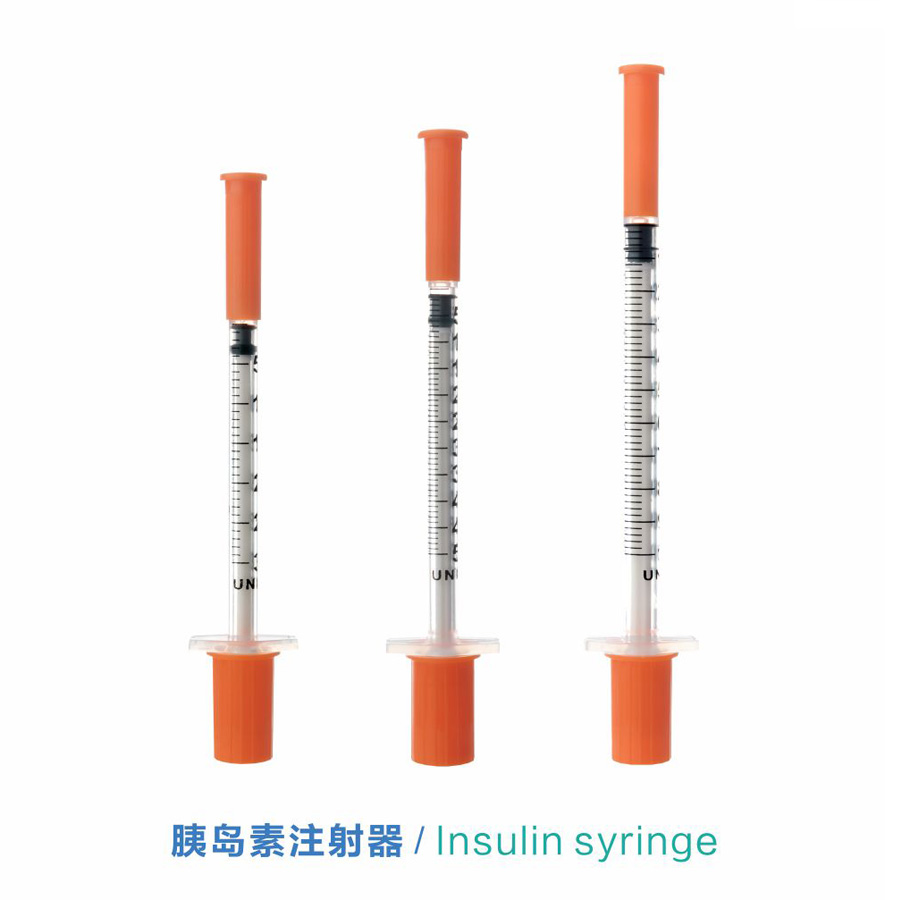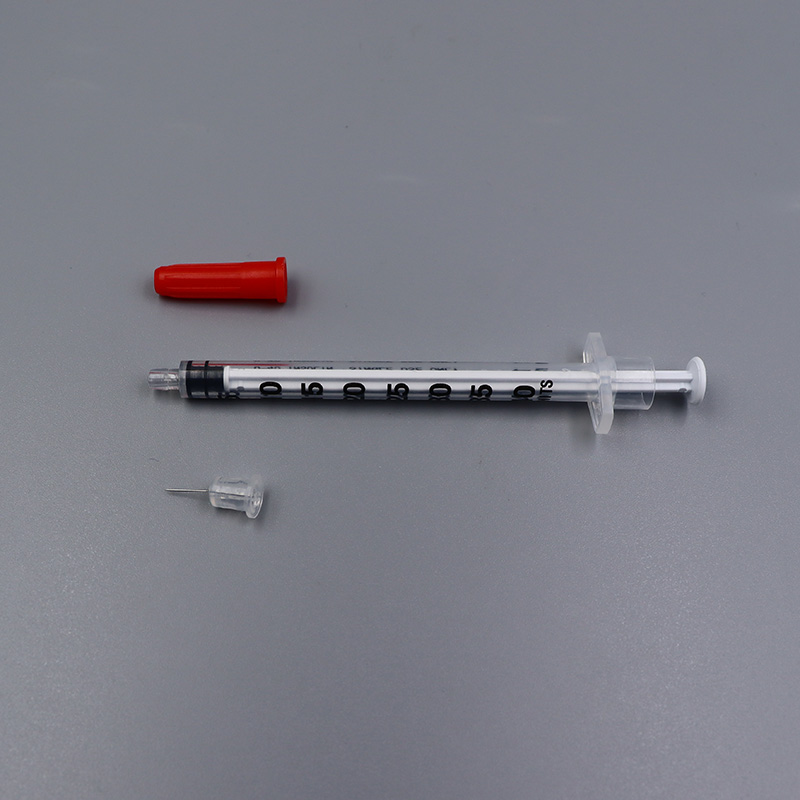For people with diabetes who require daily insulin injections, choosing the right insulin syringe is critical. It’s not only about dosage accuracy, but it also directly affects injection comfort and safety. As an important medical device and a widely used type of medical consumables, there are many insulin syringe sizes available on the market. Understanding these specifications helps patients make the best decision. This article dives deep into the key features, size specifications, and selection criteria for insulin syringes.
Key Features of Insulin Syringes
Modern insulin syringes are designed for both safety and ease of use. Their main features include:
Disposable for One-Time Use: To ensure maximum sterility and safety, all syringes are disposable insulin syringes. Reuse increases the risk of infection, needle dullness, and inaccurate dosing.
Rotate Injection Sites: Repeatedly injecting in the same area can cause local fat buildup or hardening, affecting insulin absorption. Doctors recommend rotating sites — abdomen, thigh, buttock, or upper arm — to avoid complications.
Subcutaneous Injection: Insulin is delivered into the fat layer under the skin — a simple, safe, and effective method of injection.
Detailed Explanation of Insulin Syringe Sizes
An insulin syringe consists of two main parts: the barrel and the needle. Their specifications are key factors when selecting the right syringe.
1. Barrel Size
Barrel size is measured in milliliters (ml) and insulin units (U). It directly determines the maximum amount of insulin per injection. Common barrel sizes include:
0.3 ml (30 units): Suitable for patients who inject up to 30 units at a time, often children or new insulin users.
0.5 ml (50 units): The most common size, for patients needing up to 50 units per dose.
1.0 ml (100 units): Designed for patients requiring larger insulin doses.
Choosing the right barrel size allows more accurate dose measurement. For small doses, using a smaller barrel reduces measurement errors.
2. Needle Gauges and Length
Insulin syringe needle sizes are defined by two factors: gauge (thickness) and length.
Needle Gauge: The higher the gauge number, the thinner the needle. Thinner needles help reduce injection pain.
28G, 29G: Thicker needles, less commonly used today.
30G, 31G: The most popular sizes — thinner, less painful, and preferred for children or pain-sensitive patients.
Needle Length: Different lengths are chosen based on body type and injection site.
Short: 4 mm, 5 mm — ideal for children or lean adults.
Medium: 8 mm — standard for most adults.
Long: 12.7 mm — for patients who require deeper subcutaneous injection.
Below is a chart summarizing combinations of barrel sizes, needle lengths, and gauges for easy reference:
| Barrel Size (ml) | Insulin Units (U) | Common Needle Length (mm) | Common Needle Gauge (G) |
| 0.3 ml | 30 U | 4 mm, 5 mm | 30G, 31G |
| 0.5 ml | 50 U | 4 mm, 5 mm, 8 mm | 30G, 31G |
| 1.0 ml | 100 U | 8 mm, 12.7 mm | 29G, 30G, 31G |
Why Syringe Size Matters
Selecting the correct syringe isn’t just about convenience — it affects treatment outcomes and overall quality of life.
1. Dosage Accuracy
As noted earlier, matching barrel size with dosage improves precision measurements. For example, drawing a small dose with a large 1.0 ml syringe makes reading the scale difficult, increasing the risk of dosing errors.
2. Comfort
Needle gauge and length directly affect pain levels. Thinner, shorter needles reduce discomfort and increase patient compliance. Research shows that thinner needles reduce skin penetration resistance, making injections less painful.
Main Factors to Consider When Choosing the Right Insulin Syringe
When selecting an insulin syringe, patients should consider:
1. Prescribed dose: The primary factor — select a barrel that matches the doctor-recommended dose per injection.
2. Body type and skin thickness: Lean patients may need shorter, thinner needles, while heavier patients may require slightly longer needles for proper subcutaneous delivery.
3. Age: Children typically use shorter, thinner needles to reduce pain and anxiety.
4. Personal preference: Pain-sensitive patients may prioritize comfortable needles for better injection experience.
Our Recommendation: High-Quality Insulin Syringes
Shanghai Teamstand Corporation, a professional medical device supplier, is committed to providing high-quality medical consumables to global users. We offer a full range of insulin syringe sizes to meet diverse patient needs.
Our insulin syringes feature:
High-Precision Barrels: Ensuring every dose is accurately measured for effective blood sugar control.
Comfortable Needles: Designed to minimize injection pain and improve user experience.
Minimal Waste: One of our separated-type syringes is specially engineered as “dead space free,” reducing insulin residue and avoiding unnecessary waste.
Conclusion
In summary, selecting the right insulin syringe is crucial for daily diabetes management. Understanding insulin syringe sizes, insulin syringe needle sizes, and how they influence dosage accuracy and comfort empowers patients to make informed choices. A high-quality, properly sized disposable insulin syringe ensures treatment effectiveness and enhances quality of life. We hope this guide helps you better understand and select the syringe that’s best for you.
Post time: Sep-01-2025









